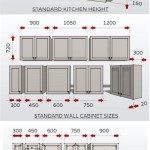Essential Aspects of Kitchen Cabinet Door Hinge Placement Diagrams
Precise hinge placement is crucial for smooth and durable functionality of your kitchen cabinet doors. A meticulously crafted diagram serves as an invaluable guide for achieving optimal alignment, ensuring that your doors open and close seamlessly. In this article, we will delve into the essential aspects of creating a comprehensive kitchen cabinet door hinge placement diagram.
Materials for Hinge Placement Diagramming
To embark on this task, you will require a few essential materials:
- Blueprint or detailed drawing of your kitchen cabinets
- Graph paper or specialized hinge placement software
- Ruler or measuring tape
- Pencil or drawing tools
Steps for Creating a Hinge Placement Diagram
Creating a hinge placement diagram involves several key steps:
1. Measure and Mark Cabinet Dimensions
Determine the overall dimensions of your cabinets, paying attention to the height, width, and depth. Accurately transfer these measurements onto your graph paper or software.
2. Plan Door Overlay and Reveal
Decide on the amount of overlay or reveal you desire for your cabinet doors. This refers to how much of the door extends past the cabinet frame when closed.
3. Calculate Hinge Locations
Using the formula "Door Height / 2 - Overlay - 1/2 Hinge Height," calculate the vertical position for the top and bottom hinges. For the horizontal placement, measure the distance from the edge of the door to the center of the hinge cup.
4. Plot Hinge Positions on Diagram
Transfer the calculated hinge positions onto your diagram. Make sure to indicate the side of the cabinet (left or right) and the direction in which the door opens.
5. Optimize Hinge Spacing
Ensure that the hinges are evenly spaced along the length of the door. For doors wider than 36 inches, consider adding an additional hinge in the middle.
6. Designate Screw Hole Locations
Indicate the precise locations of the screw holes for each hinge, considering the door thickness and type of hinge used.
7. Create Template for Drilling
If desired, create a template from your diagram to facilitate accurate drilling of the hinge holes.
Benefits of Using Hinge Placement Diagrams
Utilizing hinge placement diagrams offers numerous advantages:
- Ensures accurate alignment and smooth operation of cabinet doors
- Reduces the risk of misaligned doors or damaged hinges
- Facilitates efficient drilling and installation
- Serves as a valuable reference guide for future adjustments or repairs
Conclusion
A comprehensive kitchen cabinet door hinge placement diagram is an indispensable tool for achieving precise and functional hinge installation. By following the steps outlined above and paying attention to the essential aspects of hinge placement, you can create a diagram that will guide you towards flawlessly operating cabinet doors.

Drill For Concealed Hinges

How Many Hinges

Installing Lift Up Stay Open Cabinet Door Hardware Sawdust Girl

How To Measure Hinges For Kitchen Doors Kdh

Hinge Boring

Cabinet Hinge Boring Answering All Your Questions Fast Doors

Soft Close Cabinet Hinges Kitchen Cabinets 105 Temu

Home Dzine Diy Quick Tip Install Concealed Hinges

Tambee Corner Cabinet Hinge Lazy Susan Hinges For Cabinets 45 Degree

How To Install Cabinet Hinges With Pictures Wikihow
Related Posts








